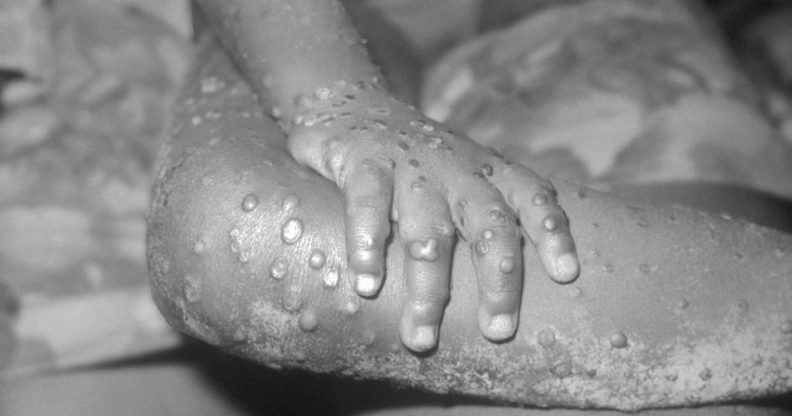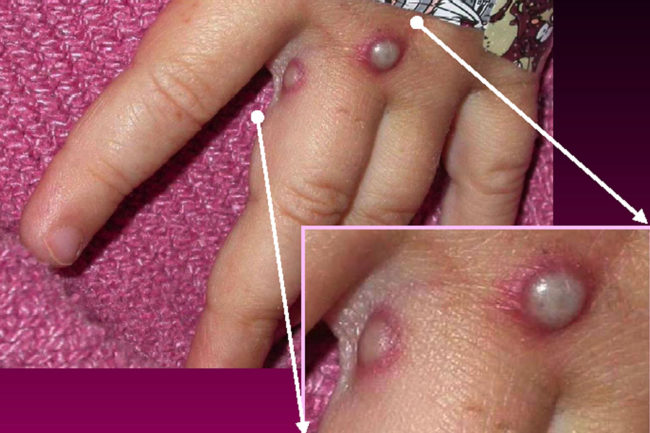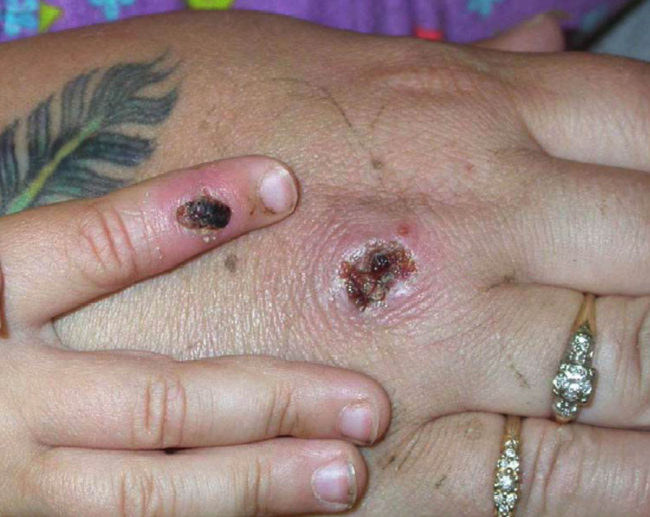What is monkeypox? Second person diagnosed with deadly virus

The first ever cases of monkeypox in the UK have been recorded in the past week. So what is the deadly virus? What are the symptoms. And are you at risk?
Monkeypox, a rare virus, which health experts estimate is deadly in 10 percent of cases, was first diagnosed in England on Friday (September 7).
According to Public Health England (PHE), the patient—a Nigerian national—was visiting a naval base in Cornwall at the time.
Following his diagnosis, he was taken to a specialist unit at the Royal Free Hospital in London.
And, on Tuesday (September 11), the the second ever recorded case of monkeypox was recorded when a person, who had visited Nigeria, was diagnosed with the disease at Blackpool Victoria Hospital.
They have since been moved to Royal Liverpool University Hospital, where there is an expert respiratory infectious disease centre, for treatment.
Nick Phin, deputy director of the National Infection Service at PHE, said that “sporadic cases” of monkeypox have been reported since there was a “large sustained outbreak” of the virus in September 2017 in Nigeria.
“It is likely that monkeypox continues to circulate in Nigeria and could, therefore, affect travellers who are returning from this part of the world,” Phin added.
“However, it is very unusual to see 2 cases in such a relatively short space of time. We are working hard to contact individuals, including healthcare workers, that might have come into contact with the individual to provide information and health advice.”
Both hospitals are using quarantine and isolation methods in a bid to stop the virus from spreading to staff and patients.
PHE has said it believes the two patients contracted monkeypox in Nigeria.
It is contacting individuals who have been in close contact with the infected patients as a precautionary measure.
What is monkeypox?
Monkeypox is an infectious virus related to smallpox. It has mostly been reported in central and west African countries. The first recorded case in humans was in 1970 in the Democratic Republic of Congo.
The virus is mostly spread by rodents and can jump to humans if they eat or handle infected meat.
Monkeypox can appear similar in appearance to chickenpox.
PHE has said that, in most cases, the disease is a mild “self-limited” condition and those infected usually get better within a few weeks.
However, monkeypox can cause severe illness—and even death—in some cases.

Monkeypox lesions on a child in the US in 2003. (Courtesy of CDC/Getty)
Dr Michael Jacobs, clinical director of infection at the Royal Free Hospital, said: “Monkeypox is, in most cases, a mild condition which will resolve on its own and have no long-term effects on a person’s health. Most people recover within several weeks.
“It is a rare disease caused by monkeypox virus and has been reported mainly in central and west African countries.”
Monkeypox was first identified in monkeys by scientists in a laboratory in 1958.
The virus was first recorded in the West during an outbreak in the US in 2003.
It is believed this outbreak was spread by Gambian rodents, which had become a popular pet in the country at the time. Out of the total 71 cases diagnosed, there were no fatalities.
Will I catch it?
Although monkeypox is an infectious disease, PHE has said that it is not easily spread between people.
“The infection can be spread when someone is in close contact with an infected person; however there is a very low risk of transmission to the general population,” the government agency said.

Monkeypox blisters on two patients during the outbreak in the US in 2003. (Courtesy of CDC/Getty)
Dr Nick Phin, deputy director of the National Infection Service at PHE, said: “It is important to emphasise that monkeypox does not spread easily between people and the overall risk to the general public is very low.
“Public Health England is following up those who have had close contact with the patient to offer advice and to monitor them as necessary.”
What are the signs of monkeypox?
Symptoms can at first include a fever, headache, muscle pains, feeling tired, and swollen lymph nodes
A rash can then develop, usually on the face before spreading around the body. This rash can form blisters, which crust over, before the scab peels off.
Symptoms generally appear within ten days of exposure to the virus and can last for between two and five weeks.

